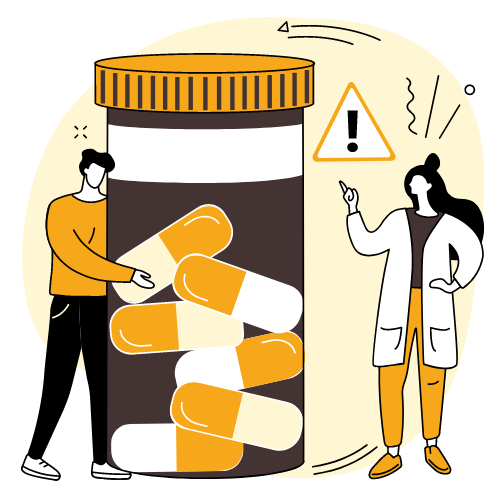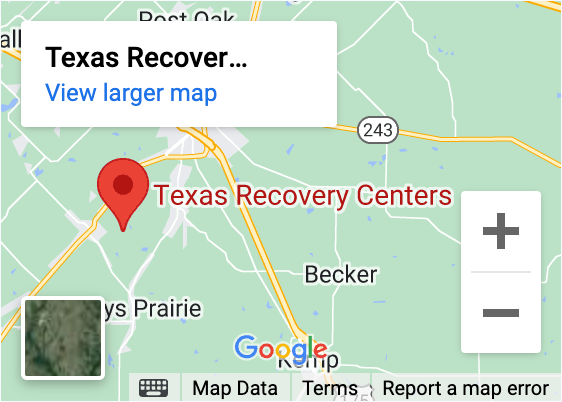The opioid crisis has devastated communities across Texas for more than two decades, claiming thousands of lives annually and leaving countless families struggling with the aftermath of addiction. But a significant shift is underway. Following years of litigation against pharmaceutical companies, distributors, and retailers, Texas has secured $3.347 billion in settlement agreements—money that’s now beginning to flow into communities and transform how Texans access addiction treatment and recovery services.
At Texas Recovery Centers, we’re witnessing firsthand how these settlement funds are reshaping the addiction treatment landscape in our state. From expanded access to life-saving medications to new prevention programs in schools, the impact of this historic settlement is already being felt. Understanding where these funds come from, how they’re being distributed, and what changes they’re creating can help you appreciate the broader context of addiction treatment in Texas today.
How Texas Secured Billions in Opioid Settlements
To understand the significance of these settlement funds, we need to look at how we got here. The opioid crisis didn’t happen by accident. It was fueled in part by aggressive marketing practices, misleading information about the addictive nature of prescription opioids, and inadequate oversight of prescription drug distribution.
The Companies Held Accountable
Texas, along with a broad coalition of states and local governments, reached settlement agreements with 23 companies for their role in the opioid crisis. These include:
Pharmaceutical Manufacturers:
- Johnson & Johnson (Janssen)
- Purdue Pharma and the Sackler family
- Teva Pharmaceuticals
- Endo Pharmaceuticals
- Allergan
- Eight generic manufacturers (Alvogen, Amneal, Apotex, Hikma, Indivior, Mylan, Sun, and Zydus)
- Mallinckrodt
Pharmaceutical Distributors:
- AmerisourceBergen
- Cardinal Health
- McKesson
Pharmacy Chains:
- CVS
- Walgreens
- Walmart
- Kroger
Consulting Firms:
- McKinsey & Company (for their role in advising Purdue Pharma on opioid marketing strategies)
- Publicis
The most recent settlement with Purdue Pharma and the Sackler family alone adds an estimated $286 million to Texas’s total. These agreements represent years of litigation led by Texas Attorney General Ken Paxton and collaborative efforts with local governments across the state.
The Total Impact: $3.347 Billion Over Two Decades
Texas’s combined share from all settlements totals $3.347 billion, making it one of the largest state allocations in the national settlement. However, it’s important to understand that this money doesn’t arrive all at once. Instead, payments are distributed over 18-20 years based on the specific terms of each settlement agreement (many agreements pay out over ~18 years (e.g., distributors/J&J), but some slightly differ (e.g., Kroger ~11 years)).
As of 2024, Texas has received approximately $457 million from these settlements, with $200 million already distributed or obligated to specific programs and initiatives. The first major disbursement to local governments occurred in March 2023 ($47.1 million), followed by additional payments in April 2024 ($9.2 million) and April 2025 ($44.8 million). The Comptroller’s Sept 3, 2025 finance memo shows a total of $696,064,027.46 received (net of attorney fees) by that date (with earlier $200M in statewide grants and other obligations already noted).

How Settlement Funds Are Distributed in Texas
One of the most critical aspects of these settlements is ensuring the money actually reaches communities affected by the opioid crisis. Texas has established a structured distribution system designed to balance statewide coordination with local autonomy.
The Three-Part Allocation Structure
Texas Government Code Section 403.506 establishes how settlement proceeds are divided:
15% to Local Governments: Counties and municipalities receive 15% of settlement funds directly. These payments go to the 254 counties and numerous cities across Texas based on a formula that considers factors like population and the severity of the opioid impact in each area. Local governments have discretion in how they spend these funds, as long as expenditures address opioid-related harms and comply with state and federal laws.
15% to the State: This allocation goes to the Opioid Abatement Account, a special account in general revenue. Funds can only be appropriated through the legislative process to state agencies for opioid-related prevention and treatment programs.
70% to the Opioid Abatement Trust Fund: This is the largest share, managed by the Texas Opioid Abatement Fund Council (OAFC). From this allocation:
- 1% goes to the Comptroller’s office for administration
- 15% is distributed to Texas hospital districts
- The remaining funds support statewide grants and initiatives
This distribution structure ensures that both statewide coordination and local flexibility are maintained. Communities can respond to their specific needs while the state addresses systemic gaps in treatment access.
The Texas Opioid Abatement Fund Council: Decision-Makers for the Largest Share
The OAFC, housed within the Texas Comptroller of Public Accounts, has decision-making authority over approximately 70% of settlement funds. This 14 member council, including the Comptroller as a non-voting presiding officer, includes representatives from various state agencies, healthcare providers, and communities affected by the opioid crisis.
The council’s mission is clear: distribute these once-in-a-generation funds strategically to create lasting change in how Texas prevents, treats, and responds to opioid use disorder. Rather than simply spending money quickly, the OAFC has taken a deliberate approach to identify evidence-based interventions that will have maximum impact.
Major Initiatives Funded by Settlement Money
The question everyone wants answered is: where is the money actually going? Since the first settlements were finalized, Texas has launched several major initiatives that are already changing how communities respond to opioid addiction.
Statewide Naloxone Distribution in Texas
In August 2024, the OAFC awarded a $25 million grant to University Health in Bexar County for statewide distribution of naloxone (Narcan), the opioid overdose reversal medication that has become essential in emergency response to overdoses.
This isn’t just about distributing medication—it’s about ensuring that naloxone reaches communities where it’s needed most, including rural areas that have historically lacked access to harm reduction resources. The grant includes:
- $3.1 million specifically targeting rural counties with populations under 100,000
- Training programs teaching community members, first responders, and family members how to recognize overdose symptoms and administer naloxone
- Distribution channels that place naloxone in locations where it’s most likely to be needed when seconds count
The impact of expanded naloxone access cannot be overstated. Research consistently shows that immediate administration of naloxone can prevent death from opioid overdose. By flooding Texas communities with this life-saving medication and the knowledge of how to use it, this initiative addresses one of the most urgent aspects of the opioid crisis: preventing overdose deaths.
K-12 Opioid Prevention Education: Starting Early
Prevention must start before addiction takes hold. Recognizing this, the OAFC awarded a $25 million grant to Texas A&M University Health Science Center to implement comprehensive opioid prevention curriculum and services in K-12 schools across Texas.
This initiative addresses a critical gap in youth education about substance use. Many young Texans receive little or no evidence-based education about the risks of opioid use, how addiction develops, or where to seek help if they or someone they know is struggling. The program aims to:
- Provide age-appropriate education about opioids, prescription drug misuse, and addiction
- Teach students to recognize warning signs of substance use disorder in themselves or peers
- Reduce stigma around addiction so young people feel comfortable seeking help
- Educate caregivers and parents about how to talk with their children about substance use
- Connect students and families with resources if substance use concerns arise
By reaching students early and consistently throughout their school years, this prevention education creates a foundation of knowledge that can reduce the likelihood of opioid misuse before it starts.
Peer-to-Peer Workforce Enhancement: Leveraging Lived Experience
People in recovery themselves often provide the most effective support to those still struggling with addiction. The OAFC recognized this reality by allocating up to $10 million for peer-to-peer workforce enhancement.
In April 2025, the council awarded this grant to RecoveryPeople, an organization that will use the funds to:
- Train and certify peer recovery support specialists across Texas
- Create sustainable employment pathways for people in recovery
- Develop standardized training curricula for peer support workers
- Place peer specialists in treatment centers, hospitals, jails, and community organizations
- Provide ongoing supervision and professional development for peer workers
Peer recovery specialists bring a unique perspective to addiction treatment. They’ve walked the same path as the people they’re helping, which builds trust and credibility in ways that traditional clinical staff sometimes cannot. Expanding this workforce across Texas means more people in treatment will have access to someone who truly understands their experience and can model that long-term recovery is possible.

Hospital District Distributions: Strengthening Healthcare Infrastructure
OAFC approved an initial $80M distribution to 154 hospital districts. Policy trackers note an estimated total of $166.7M planned across 148 districts. These funds support programs that remediate opioid-related harms within hospital systems, including:
- Emergency department protocols for identifying and referring patients with opioid use disorder
- Inpatient addiction consultation services
- Medication-assisted treatment (MAT) programs in hospital settings
- Discharge planning that connects patients to community treatment resources
- Training for medical staff on treating opioid use disorder
The allocation front-loads funding to small, rural hospital districts that are disproportionately impacted by the opioid crisis but have fewer resources to respond. This approach recognizes that while urban areas certainly face significant challenges, rural communities often lack even basic addiction treatment infrastructure.
Community-Based Opioid Recovery Effort (CORE) Grants
The OAFC has approved a plan to award up to $100 million through Community-Based Opioid Recovery Effort (CORE) grants. These competitive grants support evidence-based programs implemented by community organizations, treatment providers, and local governments.
Applications opened April 10, 2025 for short-term CORE grants, with long-term grants scheduled for Fall 2025. Priority areas for funding include:
- Expanding access to medication-assisted treatment
- Building recovery housing capacity
- Supporting recovery community organizations
- Implementing harm reduction strategies
- Providing treatment for special populations (pregnant women, justice-involved individuals, adolescents)
- Addressing co-occurring mental health disorders alongside addiction
This flexible grant structure allows communities to propose solutions tailored to their specific needs rather than following a one-size-fits-all approach mandated from Austin.
How Settlement Funds Are Expanding Treatment Access
Beyond these specific initiatives, the settlement funds are creating systemic changes in how Texans access addiction treatment. Understanding these broader impacts helps illustrate why this settlement represents such a significant opportunity for meaningful change.
Reducing Financial Barriers to Treatment
Cost remains one of the most significant obstacles preventing people from accessing addiction treatment in Texas. While many insurance plans cover substance use disorder treatment, gaps in coverage, high deductibles, and out-of-pocket costs can make treatment financially out of reach for many families.
Settlement funds are helping reduce these barriers by:
- Subsidizing treatment costs for uninsured or underinsured Texans
- Supporting sliding-scale fee programs at treatment centers
- Funding scholarships for residential treatment
- Expanding access to outpatient services in underserved areas
At Texas Recovery Centers, we work with many insurance providers to maximize coverage, but we also recognize that insurance doesn’t solve every financial challenge. Settlement-funded programs are creating new pathways for people who previously had no way to afford treatment to finally access the care they need.
Expanding Medication-Assisted Treatment (MAT)
Medication-assisted treatment—using FDA-approved medications like buprenorphine, methadone, or naltrexone alongside counseling and behavioral therapies—represents the gold standard for treating opioid use disorder. Research consistently shows that MAT substantially reduces overdose mortality (often ~50–60%+) compared to behavioral therapy alone.
Despite this evidence, access to MAT in Texas has historically been limited, particularly in rural areas. Settlement funds are changing this by:
- Supporting new MAT programs in regions that previously had no providers
- Training more physicians, nurse practitioners, and physician assistants to prescribe buprenorphine
- Funding mobile MAT clinics that bring treatment to underserved communities
- Covering medication costs for patients who cannot afford them
- Reducing stigma around MAT by educating communities about its effectiveness
The December 2022 passage of the Mainstreaming Addiction Treatment (MAT) Act removed federal barriers to prescribing buprenorphine, making it easier for healthcare providers to offer this life-saving medication. Now, settlement funds are providing the financial support needed to translate that expanded access into real-world availability for Texans who need it.
Addressing Treatment Gaps for Special Populations
The opioid crisis doesn’t affect all Texans equally. Certain populations face unique barriers to treatment or have specific needs that general programs don’t adequately address. Settlement funds are supporting targeted interventions for:
Pregnant and Parenting Women: Opioid use during pregnancy carries significant risks for both mothers and babies, including neonatal abstinence syndrome (NAS). Bexar County, which has the highest NAS rate in Texas, is using settlement funds to expand specialized treatment programs for pregnant women and support for families affected by NAS.
Justice-Involved Individuals: People in county jails and state prisons have disproportionately high rates of opioid use disorder, yet access to treatment while incarcerated has been limited. Settlement funds are supporting:
- MAT programs in correctional facilities
- Reentry planning that connects people to treatment upon release
- Alternatives to incarceration for people whose charges stem from addiction
Veterans: Texas has a large veteran population, and veterans face elevated rates of opioid use disorder due to factors including chronic pain from service-related injuries and co-occurring PTSD. At Texas Recovery Centers, our specialized veterans addiction treatment program recognizes these unique challenges, and settlement funds are helping expand similar specialized services across the state.
Adolescents: Young people struggling with opioid use require age-appropriate interventions delivered by specialists trained in adolescent development. Settlement funds are supporting expanded youth treatment capacity and family-based interventions.
Building Recovery Housing Infrastructure
Treatment doesn’t end when someone completes a residential or outpatient program. Many people in early recovery need stable, sober housing as they transition back to independent living. Texas has historically had a shortage of recovery housing options, particularly affordable options for people without significant financial resources.
The OAFC has designated recovery housing services as a Council-Selected Targeted Grant Strategy for Summer 2025, recognizing that this infrastructure gap presents a significant barrier to sustained recovery. Settlement funds will support:
- Construction and renovation of recovery housing facilities
- Operating subsidies that keep housing affordable
- Support services that help residents maintain sobriety and employment
- Quality standards and certification for recovery residences
This focus on recovery housing addresses a critical need. Research shows that access to stable housing dramatically improves recovery outcomes and reduces relapse rates. Yet too often, people complete excellent treatment only to return to unstable living situations that undermine their progress.
Strengthening Workforce Capacity
Texas faces a shortage of addiction treatment professionals, from physicians and nurse practitioners who can prescribe MAT to counselors, therapists, and case managers. Settlement funds are addressing this workforce shortage through:
- Scholarships and loan forgiveness for professionals who commit to working in addiction treatment
- Training programs that prepare new providers to treat substance use disorders
- Continuing education for existing providers on evidence-based practices
- Expansion of the peer recovery specialist workforce
- Support for supervision and mentoring of new providers
At Texas Recovery Centers, we understand that excellent treatment depends on having skilled, compassionate professionals. As settlement funds help grow the addiction treatment workforce across Texas, more communities will have access to the specialized care that makes recovery possible.
Real-World Impact: What These Changes Mean for Texans
Numbers and funding allocations matter, but what really counts is how these settlement dollars are changing real lives. Let’s look at what expanded access looks like on the ground.
For Someone in Crisis
Before settlement-funded initiatives, a person experiencing an opioid overdose in a rural Texas county might not have survived simply because no one nearby had naloxone or knew how to use it. Today, thanks to the statewide naloxone distribution program, that same county has naloxone kits in the hands of first responders, school nurses, librarians, and community members who’ve been trained to recognize an overdose and respond immediately.
A life saved is a chance at recovery. Every person who survives an overdose has another opportunity to access treatment and begin healing.
For Families Seeking Treatment
A mother in Austin whose son is struggling with opioid addiction previously faced a difficult choice: scrape together thousands of dollars for residential treatment or try to manage with limited outpatient options that her insurance barely covered. Now, settlement-funded scholarship programs and expanded treatment capacity mean she has real options. Her son can access comprehensive residential treatment without bankrupting the family, and when he steps down from residential care, there are robust outpatient programs to support his continued recovery.
For Communities Hardest Hit
A small town in West Texas that lost multiple residents to opioid overdoses in recent years now has a mobile MAT clinic that visits twice a month, bringing treatment directly to people who previously had to drive two hours each way to see a provider. The high school has implemented evidence-based prevention education, teaching students about the risks of prescription drug misuse before experimentation begins. The local hospital has trained emergency department staff to initiate MAT and connect patients to ongoing care rather than simply treating the immediate crisis and sending people home unchanged.
These aren’t hypothetical scenarios—they’re the kinds of changes happening across Texas as settlement funds translate into programs, services, and infrastructure.
Challenges and Ongoing Needs
While the opioid settlement represents an unprecedented opportunity, it’s important to acknowledge that $3.347 billion over 20 years, while substantial, won’t solve every problem. Texas is a large state with significant needs, and challenges remain.
The Money Must Be Spent Wisely
Settlement funds can only make a lasting difference if they’re invested in evidence-based interventions rather than programs that sound good but lack proven effectiveness. The OAFC has taken a careful, deliberate approach to awarding grants, prioritizing programs with strong evidence of success. However, as funds flow to local governments with more discretion over spending, ongoing vigilance is needed to ensure money isn’t wasted on ineffective approaches.
Treatment Capacity Must Continue Growing
Even with settlement-funded expansions, Texas still doesn’t have enough treatment capacity to serve everyone who needs help. Wait lists exist at many treatment centers, and some regions still lack adequate services. Settlement funds are helping close this gap, but the need remains enormous.
At Texas Recovery Centers, we’re continuously working to expand our capacity to serve more Texans struggling with addiction. Our comprehensive approach—from medically supervised detox through residential treatment and continuing care—provides the continuum of services people need for lasting recovery, but we recognize we’re one piece of a much larger system.
Stigma Remains a Barrier
Money can build treatment centers and train providers, but it’s harder to change cultural attitudes. Stigma around addiction still prevents many people from seeking help, leads to discrimination against people in recovery, and influences policy decisions about treatment access. Settlement-funded public education campaigns are beginning to address this, but changing deeply held beliefs takes time and sustained effort.
The Crisis Continues Evolving
While settlement funds address opioid-related harms, the substance use crisis in Texas extends beyond opioids. Methamphetamine use, polysubstance use, and other challenges continue affecting communities. Treatment systems must be flexible enough to address evolving patterns of substance use while remaining focused on the opioid crisis that these settlement funds are meant to remediate.
What This Means for You or Your Loved One
If you or someone you care about is struggling with opioid addiction, understanding the broader landscape of settlement-funded changes is useful context—but what you really need to know is that help is available and that treatment works.
Access to Treatment Is More Available Than Ever
The combination of settlement-funded programs, expanded MAT access through the MATE Act, and growing treatment capacity across Texas means that more pathways to recovery exist today than existed even a few years ago. Financial barriers, while still real, are more manageable. Geographic barriers are being reduced through mobile clinics, telehealth options, and expanded services in underserved areas.
This doesn’t mean accessing treatment is always easy or straightforward, but it does mean you have options that you might not have had previously.
Evidence-Based Treatment Remains the Foundation
Settlement funds are supporting evidence-based approaches to opioid addiction treatment because research consistently shows what works. At Texas Recovery Centers, our programs are built on this same foundation:
- Medical Detoxification: Safe, comfortable withdrawal management supervised by medical professionals
- Evidence-Based Therapies: Including cognitive-behavioral therapy, dialectical behavior therapy, and trauma-focused treatment that addresses the root causes of addiction
- Medication-Assisted Treatment: When clinically appropriate, using medications like buprenorphine or naltrexone alongside counseling
- Comprehensive Support: Including family therapy, peer support, case management, and aftercare planning
- Holistic Approaches: Such as adventure and wilderness therapy that complement traditional treatment
These approaches aren’t trendy or experimental—they’re proven interventions that create lasting change.
Your Recovery Matters
The opioid crisis is often discussed in terms of statistics: overdose deaths, treatment admissions, dollars allocated. But behind every number is a person—someone’s child, parent, sibling, friend, spouse. Your recovery matters. Your loved one’s recovery matters.
The settlement funds flowing into Texas represent accountability for the corporate decisions that helped fuel this crisis. But more importantly, they represent hope: hope that communities can heal, that systems can improve, and that people struggling with addiction can access the treatment they need to reclaim their lives.
The Path Forward: Sustained Commitment Required
The opioid settlement creates momentum and provides resources that Texas desperately needs. But money alone doesn’t solve complex social and health problems. What happens next depends on sustained commitment from policymakers, healthcare providers, community organizations, and Texans across the state.
Continued Focus on Evidence-Based Solutions
As settlement funds flow into communities over the next two decades, maintaining focus on what actually works will be essential. The temptation to fund popular but ineffective programs must be resisted in favor of interventions with proven track records of success.
Integration of Addiction Treatment into Healthcare
For too long, addiction treatment has existed as a separate, siloed system disconnected from mainstream healthcare. Settlement funds provide an opportunity to integrate substance use disorder treatment into primary care, emergency departments, hospitals, and mental health systems—creating a more seamless experience for people seeking help.
Addressing Social Determinants of Health
Addiction doesn’t exist in isolation. It’s intertwined with housing instability, unemployment, trauma, mental health conditions, and other challenges. Comprehensive solutions must address these interconnected issues rather than treating addiction as if it exists in a vacuum.
Supporting People in Long-Term Recovery
Treatment is a beginning, not an end. People in long-term recovery need ongoing support, opportunities for meaningful employment, stable housing, strong social connections, and communities that welcome them back rather than permanently stigmatizing them for past struggles.
Taking Action: What You Can Do
Whether you’re someone struggling with opioid addiction, a family member concerned about a loved one, or a Texan who wants to see communities heal, there are concrete steps you can take:
If You’re Struggling with Opioid Addiction
Don’t wait for the “right time” or assume you need to handle this alone. Reach out today:
- Call Texas Recovery Centers at 214-295-6503 to speak with our admissions team about treatment options or learn about our comprehensive addiction treatment programs
- Contact the SAMHSA National Helpline at 1-800-662-4357 for confidential 24/7 referrals to treatment services
- Talk to your primary care doctor about treatment options, including medication-assisted treatment
Recovery is possible. Treatment works. You deserve support.
If You’re Concerned About a Loved One
- Educate yourself about opioid addiction and treatment options
- Approach your loved one with compassion rather than judgment
- Offer specific support: help researching treatment options, assistance with insurance, transportation to appointments
- Contact Texas Recovery Centers to discuss family involvement in treatment
- Consider attending support groups for families affected by addiction, such as Nar-Anon or Al-Anon
- Take care of your own wellbeing—supporting someone with addiction can be emotionally exhausting
If You Want to Support Community Recovery Efforts
- Stay informed about how your county or city is using settlement funds
- Advocate for evidence-based approaches in your community
- Support organizations providing addiction treatment and recovery services
- Challenge stigma when you encounter it
- Consider whether your organization could apply for settlement-funded grants to expand services
A Historic Opportunity to Change Lives
The Texas opioid settlement represents one of the most significant opportunities in our state’s history to address a public health crisis that has devastated countless families and communities. The $3.347 billion flowing into Texas over the next two decades acts as accountability for harm caused, resources to heal communities, and hope for thousands of Texans struggling with opioid addiction.
At Texas Recovery Centers, we’re honored to be part of the solution. Our comprehensive addiction treatment programs, located on our spacious campus in Scurry, Texas, provide the evidence-based care, compassionate support, and beautiful healing environment where lasting recovery becomes possible.
As settlement funds expand treatment access across our state, more Texans will have the opportunity to begin recovery journeys. More families will be reunited. More communities will heal. But none of this happens automatically—it requires people like you taking that courageous first step toward help.
If you or someone you love is struggling with opioid addiction, don’t let another day pass. The treatment you need is more accessible than it’s ever been, and the support you deserve is waiting.
Contact Texas Recovery Centers today at 214-295-6503 to learn how we can help you begin your recovery journey.
Your story doesn’t have to be defined by addiction. With the right support, evidence-based treatment, and commitment to healing, recovery isn’t just possible, it’s probable. Let us help you take that first step.













